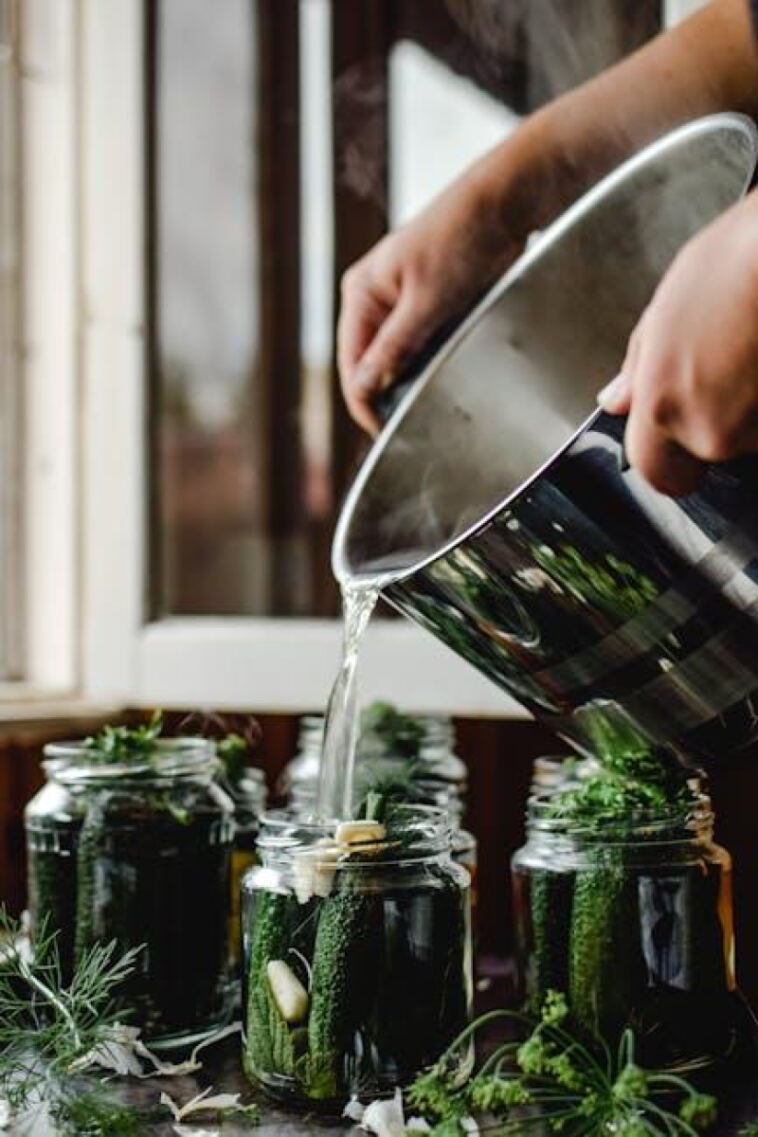- Like
- SHARE
- Digg
- Del
- Tumblr
- VKontakte
- Flattr
- Buffer
- Love This
- Save
- Odnoklassniki
- Meneame
- Blogger
- Amazon
- Yahoo Mail
- Gmail
- AOL
- Newsvine
- HackerNews
- Evernote
- MySpace
- Mail.ru
- Viadeo
- Line
- Comments
- Yummly
- SMS
- Viber
- Telegram
- JOIN
- Skype
- Facebook Messenger
- Kakao
- LiveJournal
- Yammer
- Edgar
- Fintel
- Mix
- Instapaper
- Copy Link
Imagine biting into a perfectly ripe strawberry, its sweetness bursting in your mouth, or savoring the tanginess of a freshly picked tomato. The taste of freshly harvested produce is truly a delight for the senses. But what happens when the harvest season ends, and you still want to enjoy those flavors year-round? That’s where post-harvest preservation comes in. In this article, we’ll explore the art of preserving the flavors of your favorite fruits and vegetables long after they’ve been picked, helping you master the art of savoring the flavor.
Heading 1: Understanding the Importance of Post-Harvest Preservation
Post-harvest preservation is a crucial step in ensuring the longevity and quality of our food supply. By understanding the importance of preserving fruits and vegetables after they have been harvested, we can make the most of their flavors and nutrients. Whether you are a seasoned chef or a food enthusiast, mastering post-harvest preservation techniques can elevate your culinary creations to the next level.
One of the key benefits of post-harvest preservation is the ability to savor the natural flavors of seasonal produce all year round. By properly storing and preserving fruits and vegetables, you can enjoy the taste of summer even in the depths of winter. From homemade jams and pickles to dried fruits and frozen vegetables, there are countless ways to preserve the flavors of your favorite fruits and vegetables for future enjoyment.
Additionally, post-harvest preservation is essential for reducing food waste and maximizing the nutritional value of our produce. By preserving fruits and vegetables at their peak ripeness, we can minimize spoilage and extend their shelf life. This not only helps us save money on groceries but also ensures that we are getting the most nutrients out of our food. With a little creativity and the right techniques, anyone can become a master of post-harvest preservation.
Heading 2: Exploring Various Preservation Methods for Different Types of Produce
When it comes to preserving the freshness and flavor of different types of produce, there are a variety of methods that can be used depending on the specific type of fruit or vegetable. One popular preservation method is canning, which involves sealing food in jars or cans to prevent spoilage. This method works best for fruits like peaches and pears, as well as some vegetables like tomatoes and green beans.
Another effective preservation method is freezing, which involves storing produce at low temperatures to inhibit the growth of bacteria and enzymes that cause spoilage. Freezing works well for a wide range of fruits and vegetables, including berries, corn, and broccoli. By blanching produce before freezing, you can help maintain its color, flavor, and nutritional value.
For certain types of produce, like herbs and leafy greens, drying is a popular preservation method. By removing moisture from the food, drying helps prevent the growth of mold and bacteria. Herbs can be dried by hanging them in a warm, dry place, while leafy greens can be dried in a dehydrator. Once dried, herbs can be stored in airtight containers and used to add flavor to dishes throughout the year.
Heading 3: Tips for Maximizing Flavor and Nutrient Retention
Preserving the flavor and nutrients of your harvest is essential for enjoying the full benefits of your produce. One tip for maximizing flavor retention is to store fruits and vegetables in a cool, dark place to slow down the ripening process. This helps preserve their natural sugars and flavors for longer-lasting freshness. Additionally, using proper packaging such as airtight containers or vacuum-sealed bags can help prevent oxidation and flavor loss.
For nutrient retention, consider consuming your produce as soon as possible after harvesting. Fresh fruits and vegetables contain the highest levels of vitamins and minerals, which can degrade over time. To further maximize nutrient retention, opt for cooking methods that preserve nutrients, such as steaming or lightly grilling instead of boiling. This helps retain water-soluble vitamins like vitamin C and B vitamins.
Another way to savor the flavor and nutrients of your harvest is through preservation methods like freezing or canning. Freezing fruits and vegetables at their peak ripeness locks in nutrients and flavors, making them great additions to smoothies, sauces, and soups. Canning, on the other hand, allows you to enjoy your favorite produce year-round, providing a taste of summer even in the colder months.
Heading 4: The Art of Fermentation: A Time-Honored Preservation Technique
Fermentation is not just a technique; it’s an ancient art form that has been passed down through generations. By harnessing the power of natural bacteria and yeast, we are able to transform ordinary vegetables into tangy pickles, flavorful sauerkraut, and fizzy kombucha. This age-old preservation method not only extends the shelf life of food but also enhances its nutritional value.
One of the key benefits of fermentation is the development of complex flavors that are unique to each batch. As the bacteria feed on sugars in the food, they produce compounds that give fermented foods their signature tanginess and umami notes. Experimenting with different ingredients, spices, and fermentation times allows you to customize the flavor profile to suit your taste preferences.
Mastering the art of fermentation requires patience and practice, but the rewards are well worth the effort. By learning how to create your own fermented foods, you can reduce food waste, save money, and enjoy a wide variety of probiotic-rich delicacies. So roll up your sleeves, gather your supplies, and embark on a journey of flavor exploration through the time-honored tradition of fermentation.
Heading 5: Harnessing the Power of Dehydration for Long-Term Preservation
Dehydration is a powerful tool when it comes to preserving the flavors of fruits and vegetables for the long term. By removing moisture from produce, you can extend its shelf life and enjoy the taste of summer even during the coldest months. Whether you’re a seasoned gardener looking to make the most of your harvest or a foodie looking to experiment with new flavors, harnessing the power of dehydration is a game-changer.
One of the key benefits of dehydration is that it allows you to retain the nutrients and flavors of fresh produce without the need for artificial preservatives. When done correctly, dehydrated fruits and vegetables can last for months, if not years, without losing their nutritional value or taste. Plus, dehydrated snacks are a convenient and portable option for on-the-go munching, whether you’re hitting the trails or packing lunch for work.
From crispy apple chips to zesty sun-dried tomatoes, the possibilities are endless when it comes to dehydrating fruits and vegetables. Experiment with different seasonings, textures, and combinations to create unique and flavorful snacks that will impress even the most discerning palates. So why not get started today and savor the flavor of your favorite fruits and vegetables all year round?
Q&A
Q: Why is post-harvest preservation important for food?
A: Post-harvest preservation helps to extend the shelf life of food, reducing waste and ensuring that we can enjoy fresh produce long after it’s been harvested.
Q: What are some common methods of post-harvest preservation?
A: There are numerous methods of preservation, including canning, drying, pickling, freezing, and fermenting. Each method offers a unique way to lock in the flavor of fresh food.
Q: How can I best preserve herbs from my garden?
A: To preserve herbs from your garden, try drying them by hanging them upside down in a well-ventilated area, or freezing them in ice cube trays with a bit of water or oil.
Q: What tips can you offer for preserving fruits and vegetables?
A: For fruits and vegetables, consider canning them in jars, pickling them in brine, or freezing them in batches for future use. Each method can help retain the fresh flavors of produce.
Q: How does proper post-harvest preservation impact the taste of food?
A: Mastering post-harvest preservation can help food maintain its flavor, texture, and nutritional value for an extended period of time, allowing us to savor the delicious taste of fresh produce year-round.
The Way Forward
As we conclude our journey through the art of post-harvest preservation, we hope you have gained valuable insights on how to savor the flavors of nature’s bounty for longer periods of time. From canning and drying to freezing and fermenting, the possibilities are endless when it comes to extending the lifespan of your favorite fruits and vegetables. So next time you find yourself overwhelmed with a surplus of produce, don’t fret – embrace the opportunity to get creative in the kitchen and preserve those flavors for a later date. Remember, mastering the art of post-harvest preservation is not only about extending the shelf life of your food, but also about celebrating the diversity and richness of our agricultural treasures. Happy preserving, and may your taste buds always be delighted with the fruits of your labor.


